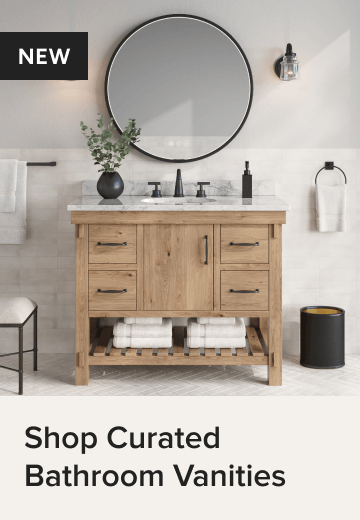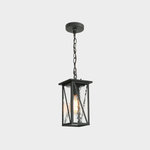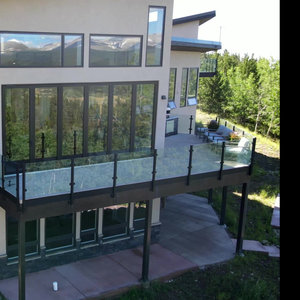How to Map Out Your Kitchen Remodel’s Scope of Work
Help prevent budget overruns by determining the extent of your project, and find pros to help you get the job done
When you’re planning a kitchen remodel, an important early step is to determine your project’s scope of work. Find out what scope of work is and how you can decide what yours will be. Then find the right pros for your project.
Considerations for Your Kitchen Remodel
- Are you remodeling your kitchen within the existing footprint, adding square footage to it or moving it entirely?
- Do you want to relocate the sink or range, which would mean moving the plumbing or gas lines?
- Are you planning on opening up the kitchen to another room? If this affects a load-bearing wall, it might require structural work and additional costs.
- With new construction, you might have heard prices referred to as the cost per square foot, but this formula rarely works with remodeling. Every home has unique conditions due to age, construction type (masonry versus frame, for example) and layout.
- Getting detailed pricing information upfront will help you meet your budget.
Determining Your Scope of Work
1. Set a rough budget for the project. Consider if the project will involve related projects like new windows or painting the whole house.
2. Create a wish list of everything you want. Include new appliances, cabinets, countertops, tile, flooring, lighting and so on. The more detailed you are, the better off you’ll be when talking to professionals. Do you want professional-grade appliances or is the next level down OK? If you have a $30,000 budget and you want a built-in refrigerator and a 36-inch professional-grade range, staying within your budget will be tough.
3. Create ideabooks showing your vision. This can help a professional get an idea of the level of expectation and finish detail required in your project. It’s challenging to communicate needs clearly, especially about visual things like finishes. Showing professionals photos of kitchen designs you like can help them see what you like and prompt them to ask the right questions.
1. Set a rough budget for the project. Consider if the project will involve related projects like new windows or painting the whole house.
2. Create a wish list of everything you want. Include new appliances, cabinets, countertops, tile, flooring, lighting and so on. The more detailed you are, the better off you’ll be when talking to professionals. Do you want professional-grade appliances or is the next level down OK? If you have a $30,000 budget and you want a built-in refrigerator and a 36-inch professional-grade range, staying within your budget will be tough.
3. Create ideabooks showing your vision. This can help a professional get an idea of the level of expectation and finish detail required in your project. It’s challenging to communicate needs clearly, especially about visual things like finishes. Showing professionals photos of kitchen designs you like can help them see what you like and prompt them to ask the right questions.
Find Professionals for Your Project
1. Research designers, architects and contractors. Look at Houzz profiles of the types of professionals you want for your job. You may need an architect, a kitchen designer, a kitchen remodeler, a design-build firm, an interior designer, a general contractor or a team. See how they describe their work and look at their portfolios to see if their aesthetic matches your own. Read the reviews on their profiles to see what past clients say about their work. Then contact pros you like and set up phone interviews and see if they’ll meet in person. Ask if you can visit job sites or other projects. This will help you see the quality of their work.
2. Check references and ask about fees. Some homeowners start by hiring a contractor, and others start with a designer or architect and use contractors referred by him or her. Others hire design-build firms that do it all. You aren’t comparing apples to apples here, so it will take some time to figure out who is the right fit.
Which Home Professional Should You Hire for Your Project?
1. Research designers, architects and contractors. Look at Houzz profiles of the types of professionals you want for your job. You may need an architect, a kitchen designer, a kitchen remodeler, a design-build firm, an interior designer, a general contractor or a team. See how they describe their work and look at their portfolios to see if their aesthetic matches your own. Read the reviews on their profiles to see what past clients say about their work. Then contact pros you like and set up phone interviews and see if they’ll meet in person. Ask if you can visit job sites or other projects. This will help you see the quality of their work.
2. Check references and ask about fees. Some homeowners start by hiring a contractor, and others start with a designer or architect and use contractors referred by him or her. Others hire design-build firms that do it all. You aren’t comparing apples to apples here, so it will take some time to figure out who is the right fit.
Which Home Professional Should You Hire for Your Project?
3. Meet the pros at your home or virtually. Start seeing who you like, who asks the right questions, who is willing to give you some rough numbers and what they need in order to do so. Some firms don’t work this way — they might have showrooms and want you to meet them on their turf. Pros who offer video consultations through Houzz may list this service on their Houzz profile, and you can schedule a meeting with them directly from their Houzz profile or directory listing.
Many contractors want a full drawing set before they’ll bid on a job. Others will be willing to do a walk-through and give you some rough numbers, nothing line-itemed or detailed. I recommend doing this with an experienced contractor. A novice may underestimate or overshoot the budget by a wide range. Ideally, having some basic space, electrical, mechanical and lighting plans will help a contractor get you a more accurate estimate.
This is only the first phase of pricing. You’ll want to reestimate based on detailed, finished plans before signing a contract. Otherwise you run the risk of having to get change orders down the road, which can be pricey.
Many contractors want a full drawing set before they’ll bid on a job. Others will be willing to do a walk-through and give you some rough numbers, nothing line-itemed or detailed. I recommend doing this with an experienced contractor. A novice may underestimate or overshoot the budget by a wide range. Ideally, having some basic space, electrical, mechanical and lighting plans will help a contractor get you a more accurate estimate.
This is only the first phase of pricing. You’ll want to reestimate based on detailed, finished plans before signing a contract. Otherwise you run the risk of having to get change orders down the road, which can be pricey.

















Scope of work is the term used to describe the basic parameters of a project. You decide the scope of work based on your budget and wish list, among other things. A designer, architect or contractor you like and trust can help you develop your scope of work and be realistic about what you can achieve within your budget. Keep in mind there’s usually not one right answer, so getting a few opinions is a good idea.
Find a pro to help with your kitchen remodeling project